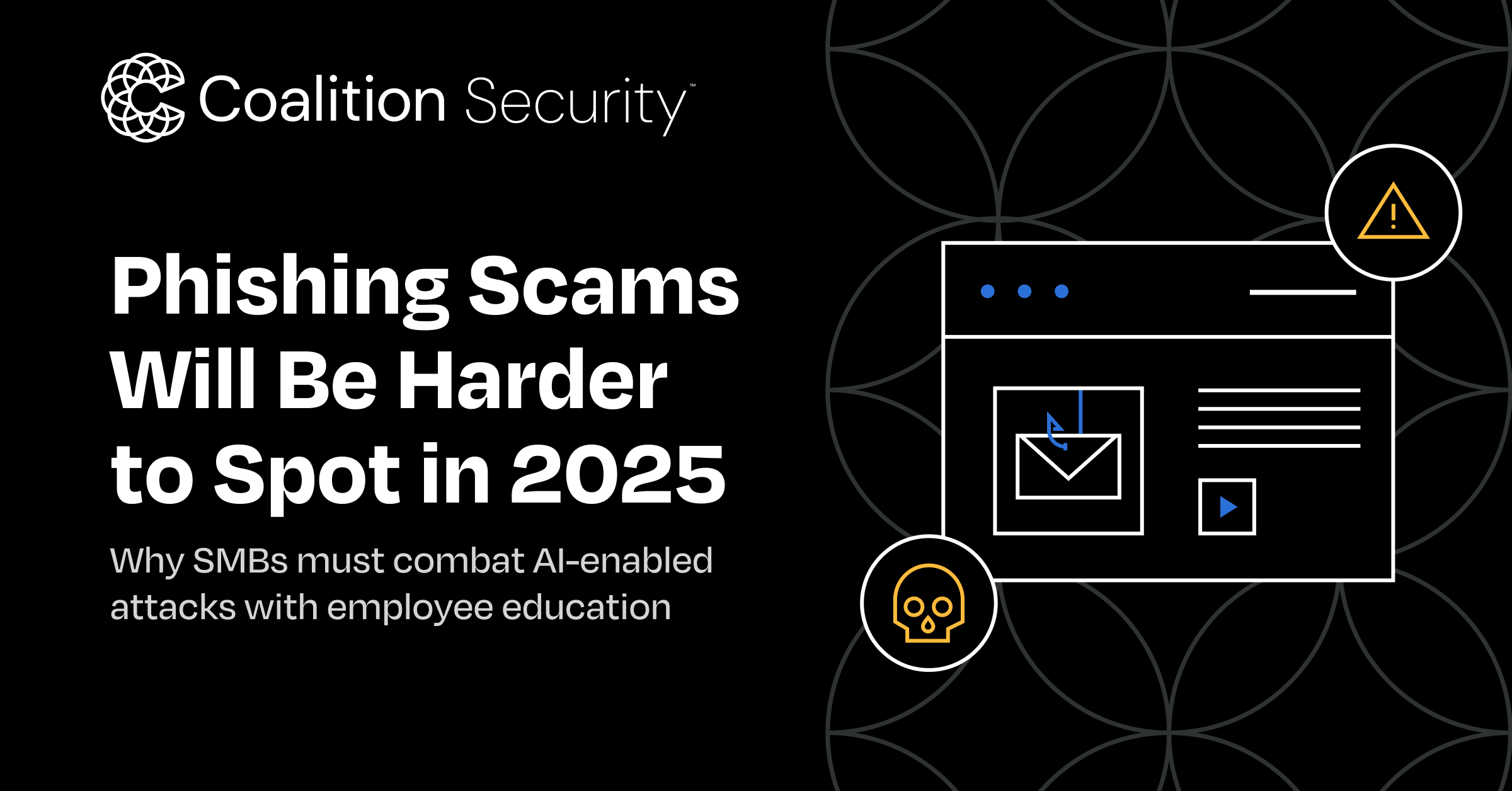Cyber threats are more advanced than ever, leaving businesses on edge about their security. From ransomware attacks to data breaches, the risks continue to multiply. That’s where AI tools step in as a game-changing solution. By analyzing data patterns, predicting risks, and automating threat responses, these tools help businesses fend off attacks before they cause harm. Companies like Darktrace and Cylance have proven how AI can transform cybersecurity strategies, giving organizations the upper hand against evolving threats. Looking for more tools to enhance your defenses? Explore our recommended AI tools for combating threats.
Understanding the Growing Cybersecurity Challenges
The fight against cyber threats has reached a critical stage. As businesses adopt new technologies and embrace remote work, the avenues for cybercriminals to strike have multiplied. Moreover, traditional IT defenses are struggling to keep up with threats that are becoming more sophisticated by the day. Let’s explore these escalating challenges and why advanced tools are essential to combat them.
Rising Threats in the Digital Landscape
Cyber threats are no longer the occasional hacker breaching a system. Today, these attacks are meticulously planned and executed for maximum impact. Modern technologies like AI and machine learning have enabled attackers to craft complex ransomware, phishing schemes, and even deepfake attacks. The rise in remote work has added another layer of vulnerability, with unsecured personal devices and home networks creating easy prey for cybercriminals.
The effects of these attacks are no longer limited to downtime or data loss. Entire industries are now at risk, with ransomware targeting critical suppliers and causing widespread economic disruption. For more insights into these alarming trends, you can explore examples like phishing scams in 2025, which illustrate the evolving danger.
Unsure what’s driving this surge? Think about it: as businesses rush to digitize, they sometimes neglect security benchmarks, leaving open doors for those on the hunt for vulnerabilities. To keep pace, it’s no longer enough to patch holes after an attack—it demands proactive and intelligent defenses.
The Limitations of Traditional Security Methods
Traditional cybersecurity measures—like firewalls, antivirus software, and manual monitoring—have served us well in the past, but they no longer suffice in addressing today’s challenges. Why? Because most of these tools are reactive by design. They detect threats after a breach has occurred, which can be too late to mitigate damages.
For instance, firewalls may block unauthorized access, but they’re not equipped for detecting sophisticated, hidden malware designed using artificial intelligence. Similarly, antivirus programs rely heavily on known threat signatures. This makes them ineffective against zero-day vulnerabilities—attacks that exploit weaknesses even before developers can issue a fix.
The evolving nature of cyberattacks requires smarter measures. This is where AI tools come in. They analyze patterns proactively, automate responses, and identify irregularities faster than any human or traditional system could. Dig deeper into such concepts by reviewing how issues like UDP flood attacks leverage outdated security protocols to disrupt businesses.
Sticking to old-school defenses in a modern threat environment is akin to using a flip phone in a world of smartphones. The stakes are higher, and the tools need to match the challenge. Advanced cybersecurity solutions that are adaptive, responsive, and AI-powered are no longer optional steps—they’re survival essentials.
For a broader perspective on cybersecurity threats and what lies ahead, check out The Future of Cybersecurity in 2025. The article dives into ongoing trends and stresses why businesses need to think ahead.
How AI Tools Enhance Cybersecurity
Cybersecurity is no longer about static defenses—it’s a dynamic arena requiring incredible speed and precision. With AI, companies can turn the tide, anticipating, detecting, and even neutralizing threats before they cause havoc. Let me walk you through the main ways AI tools are revolutionizing business security operations.
Real-Time Threat Detection
AI tools excel at processing colossal amounts of data in seconds. Ever wondered how this is useful to cybersecurity? AI software constantly analyzes network traffic, monitors system logs, and processes reports—looking for even the smallest anomalies that signal a threat. This near-instantaneous detection is key to shutting down breaches before they can spread.
For instance, consider AI’s ability to flag unauthorized logins or detect malware signatures practically as soon as they appear. Cutting-edge tools go a step further by correlating threats from thousands of endpoints simultaneously, providing an unprecedented advantage over manual analysis methods. If you’re curious about similar applications in AI, check out how DeepFake detectors address security challenges.
Anomaly Detection and Predictive Analysis
AI-powered systems shine when it comes to anomaly detection. When supported by machine learning, these systems establish behavioral baselines—essentially, the “normal” activity for users, devices, and systems. When any deviation from this baseline occurs, such as unusual login times or increased data transfers, the system immediately flags the activity as suspicious.
But AI doesn’t just respond to issues; it predicts them. By mapping historical attack patterns and analyzing them for commonalities or warning signs, AI tools can project potential vulnerabilities. This predictive analysis ensures businesses can take preventive steps rather than waiting until it’s too late. If you want to understand the transformative role of predictive AI in cybersecurity, this insight from KPMG is a great resource.
Automated Incident Response
One of AI’s most compelling strengths is its ability to handle threat responses autonomously. Many tools are equipped with automated response mechanisms, such as quarantining infected files, shutting down compromised user accounts, or blocking suspicious traffic in real time. This reduces the dependency on human analysts, who may not be able to act fast enough to prevent major damage.
Imagine a scenario where an AI system detects a ransomware attack and isolates the affected server automatically—all within seconds. Not only does this limit the spread of the attack, but it also frees up human resources to focus on more complex decision-making. For more insight into how machines and people collaborate in this realm, I’d recommend exploring Sophos’ take on AI applications in cybersecurity.
Enhancing Threat Intelligence
AI doesn’t just act—it learns, constantly adapting and improving its capabilities. One of its standout features is the ability to consolidate and evaluate threat intelligence from multiple sources. Whether it’s public threat databases, incident reports, or network-specific data, AI combines these elements to create comprehensive threat profiles.
This multi-source integration provides actionable insights, helping businesses prioritize risks and implement tailored strategies. By letting AI take on the grunt work of combing through data, cybersecurity teams can focus efforts where they’re most needed. For a deep dive into how AI enriches threat intelligence, visit Balbix’s analysis.
It’s evident that traditional methods alone can’t keep up in today’s fast-evolving threat environment. That’s why innovations in AI-backed tools are more than helpful—they’re practically essential. From identifying risks in real time to automating responses, it’s clear that we’re just scratching the surface of AI’s potential in safeguarding our digital world.
Top AI Tools for Business Cybersecurity
When it comes to battling sophisticated cyber threats, having the right AI-powered tools can make all the difference. These tools proactively identify vulnerabilities, detect potential attacks, and mitigate risks faster than traditional methods ever could. Let’s explore some of the leading tools that businesses are relying on to stay ahead of cybercriminals.
Darktrace: Self-Learning AI for Zero-Day Attacks
Darktrace is a pioneer in using self-learning AI to tackle unknown threats like zero-day attacks. Unlike traditional systems, which rely on predefined rules or past data, Darktrace’s AI continuously learns the unique patterns and behaviors of a network. This allows it to spot anomalies in real-time, no matter how novel or subtle the threat may be.
One standout capability is its ability to generate autonomous responses within seconds of detecting a malicious activity. Whether it’s reducing the connection speed of a suspicious device or neutralizing potential malware before it spreads, this tool minimizes damage without waiting for human intervention. For businesses concerned about cutting-edge cyberattacks, Darktrace is a strong ally. To learn more, check out Darktrace reviews and implementation strategies.
Vectra AI: Identifying Attacker Behaviors
Vectra AI focuses on identifying attacker behavior rather than just flagging technical anomalies. Its platform analyzes every action on the network and categorizes potential threats by risk level, ensuring teams prioritize what truly matters.
This tool doesn’t just detect threats—it provides explainable insights. You’ll understand why something was flagged as suspicious, setting it apart from many systems that operate as “black boxes.” Vectra specifically excels at finding advanced persistent threats (APTs) that linger undetected in networks. Looking for a solution to counter complex attack strategies? Vectra AI’s features are well worth considering. Discover how businesses leverage such tools to combat diverse cyber risks at this insightful resource.
Deep Instinct: Predicting and Preventing Malware
Deep Instinct uses cutting-edge deep learning models to predict and prevent both malware and ransomware attacks. What’s unique? It doesn’t just wait for a suspicious activity to occur—it predicts potential threats by analyzing massive datasets of known attack models. By doing so, it blocks attacks long before they’ve had a chance to execute.
Designed with advanced pre-execution protection, it stops malicious files or scripts from harming your system without impacting performance. Deep Instinct is a highly valuable solution for companies aiming to stay proactive against increasingly sophisticated attacks. Take a closer look at AI-driven tools like this by exploring more about cybersecurity enhancement tools here.
Sift Science: Fraud Prevention Across the Customer Journey
For companies concerned with fraud, especially in e-commerce or financial sectors, Sift Science delivers a powerful fraud detection system. This AI-driven platform monitors the entire customer journey, flagging suspicious behavior like inconsistent account details, rapid purchase attempts, or unusual device patterns.
What sets Sift Science apart is its adaptability. By integrating seamlessly into checkout systems and customer portals, it provides real-time intelligence without disrupting user experiences. It even refines its fraud models based on the latest scam trends. If payment fraud or account takeovers are common threats for your business, Sift provides a robust shield.
Tessian: Reducing Human Error in Email Security
Emails are a major cyber threat vector, and that’s where Tessian shines. By analyzing past user communications, Tessian’s AI can predict and prevent accidental data leaks, phishing scams, or misdirected emails. This means fewer “oops” moments that could cause huge reputational or financial damage.
Tessian acts like a virtual assistant for your employees, gently nudging them when they’re about to make a mistake. For example, it might flag an email intended for an external recipient containing sensitive internal information. By focusing on human factors, Tessian’s solution fills a gap often overlooked by traditional tools. Learn how email-specific threats are evolving and what solutions are available by visiting Legitpit resources on AI applications.
When protecting your business, understanding how each tool aligns with your unique vulnerabilities is critical. These AI tools not only fill security gaps but also set new standards for what businesses can expect from cybersecurity.
The Benefits of Implementing AI Cybersecurity Solutions
In today’s fast-evolving cyber threat environment, traditional methods alone aren’t enough to protect businesses. Artificial Intelligence (AI) offers a cutting-edge solution to tackle these challenges with speed, accuracy, and adaptability. Let’s explore the specific benefits AI brings to cybersecurity and how it transforms business security strategies.
Improved Efficiency and Accuracy
AI tools are designed to process and analyze massive datasets at unmatched speeds, dramatically boosting efficiency for businesses. They can sift through network logs, user activities, and even external threat data in seconds—tasks that would take hours or even days if handled manually.
What sets AI apart is its ability to minimize false positives, which have been a long-standing issue in cybersecurity. Too many irrelevant alerts can overwhelm IT teams, causing threat fatigue and missed critical breaches. AI’s intelligent algorithms remove this burden by identifying accurate threats while ignoring benign anomalies. If you’d like to see how advanced tools build accuracy, here’s an interesting insight on AI and user safety.
AI doesn’t just replace human effort—it amplifies it. By allowing teams to focus on real risks while automating mundane yet crucial tasks, efficiency skyrockets.
Scalability and Cost-Effectiveness
For small startups or large corporations, scalability is key. One of AI’s greatest strengths is its ability to grow alongside your business without significant cost increases. Traditional tools often require extensive hardware upgrades or manual reconfiguration to adapt to expanding workloads. In contrast, AI systems dynamically learn and scale their capabilities without constant human intervention.
By automating repetitive processes, businesses save money on labor-intensive tasks. Further savings come from avoiding extensive data breaches or system downtime—major cost centers for any organization. If you’re curious about how adaptable cybersecurity strategies are shaping the industry, Excelsior College breaks it down.
In a nutshell, AI tools offer a balance: powerful, adaptable protection that grows with your needs while maintaining cost efficiency—crucial for staying competitive in any industry.
Proactive Defense Mechanisms
The most compelling aspect of AI in cybersecurity is its ability to predict and neutralize threats before they happen. Traditional tools are largely reactive, addressing problems only after they’ve occurred. AI flips this model on its head, leveraging predictive analytics and behavioral baselines to anticipate vulnerabilities.
Imagine this: AI recognizes unusual activity—such as a spike in login attempts from unfamiliar locations—and blocks it before it becomes a full-scale breach. This “act-before-damage” capability redefines cybersecurity, preventing attacks rather than managing fallout. Interested in diving further into the strategic benefits of early detection? Check out the transformative role of AI on how businesses can stay ahead.
Additionally, businesses can customize these defenses to their specific sectors, whether that’s safeguarding sensitive customer data in retail or protecting intellectual assets in tech. The adaptability ensures maximum security tailored to your unique risks.
Equipping your organization with AI-powered tools isn’t just smart—it’s essential. In a world where seconds matter, real-time predictive defenses made possible by AI make all the difference between a near-miss and catastrophic damage.
Key Concerns When Choosing AI Cybersecurity Tools
Investing in AI cybersecurity tools can significantly enhance your business’s ability to fend off threats. But making the right choice isn’t as simple as picking a solution off the shelf. Businesses must consider several factors, ensuring not only protection but also operational efficiency and compliance. Let’s explore these key concerns.
Integration with Existing Infrastructure
Imagine purchasing an advanced tool only to find out it doesn’t mesh with your current systems. This is a common pitfall when businesses overlook compatibility. Seamless integration with your existing IT infrastructure is vital because poorly integrated tools can cause disruptions, slow down important processes, or require complete overhauls of current systems.
Before selecting a tool, outline the software and hardware already in use within your organization. Does the potential AI cybersecurity solution offer APIs for smooth communication? How about the ability to work across centralized and decentralized networks? Compatibility isn’t just a technical detail—it ensures that your operations can continue without a hitch.
If integrating AI into your existing tech stack is something you’re currently navigating, check out AI use in combating digital fraud.
Data Privacy and Compliance
AI tools often access massive amounts of data to function effectively. But where does this data go? It’s critical to ensure that the tools you choose comply with data privacy laws like GDPR, HIPAA, or CCPA. Skirting these regulations can lead to hefty fines and reputational damage.
Ask the right questions before committing. For instance, does the tool’s vendor offer transparency regarding how data is collected and stored? Are there mechanisms in place to anonymize sensitive information? Protecting data privacy isn’t just about following regulations—it’s about building trust with your customers and stakeholders.
For deeper insights into privacy risks associated with AI, consider exploring key AI ethical considerations.
Cost vs. Value
Budget constraints are a reality for businesses, but choosing a tool solely based on price can lead to issues. Instead, focus on evaluating the ROI of an AI solution. This involves looking beyond upfront costs and considering the long-term benefits such as reduced breach risks, increased operational efficiency, or saved labor costs.
Think of it this way: an inexpensive solution that misses critical vulnerabilities could lead to costly breaches, while a slightly pricier tool with predictive capabilities can save millions in avoided damages. Conduct financial analyses and pilot programs where possible to find tools that provide the best balance between affordability and effectiveness.
If identifying cost-effective cybersecurity solutions is on your mind, this breakdown of AI cybersecurity tool features can help illuminate your options.
Making an informed choice comes down to asking the right questions, considering both present needs and future scalability, and recognizing the intersection of functionality and cost. With so many innovative tools out there, a careful evaluation ensures you invest in solutions that truly bolster your enterprise’s defense.
Conclusion
The evolving threat landscape demands more than outdated tools can provide. AI offers a powerful, intelligent line of defense that not only identifies risks but actively prevents them. Its ability to detect threats in real-time, learn continuously, and adapt to new challenges makes it indispensable for businesses.
Investing in AI-driven solutions is no longer optional—it’s a necessity to protect your organization from costly breaches and reputational damage. It’s time to evaluate your security strategy and consider how AI tools can fill critical gaps.
To future-proof your business, explore how technologies like AI are reshaping digital security. For further insights, check out How AI Is Transforming Online Fraud and How to Protect Yourself.








